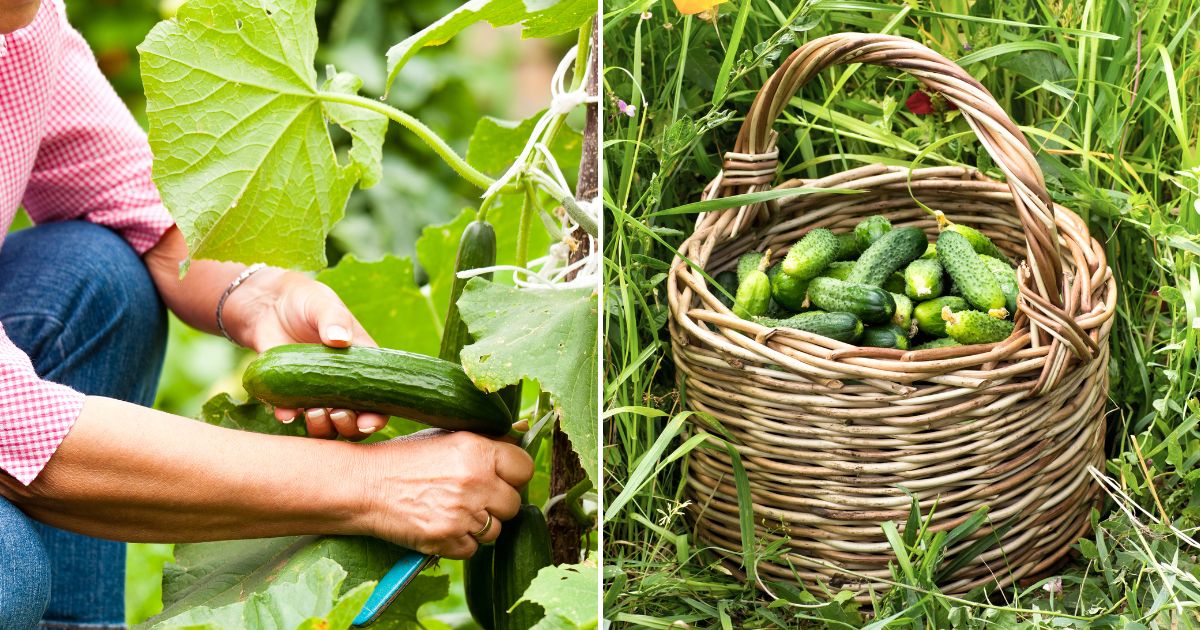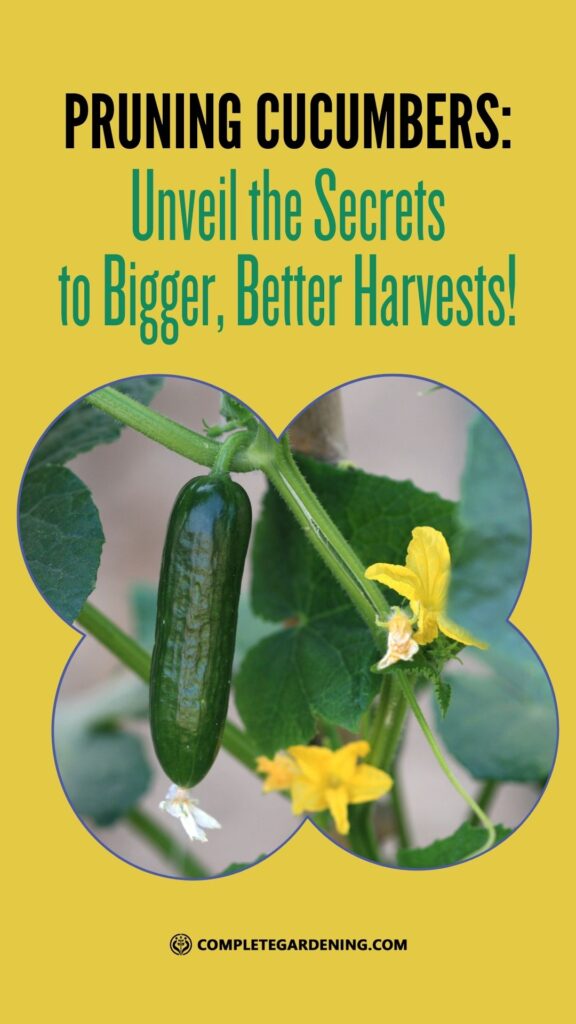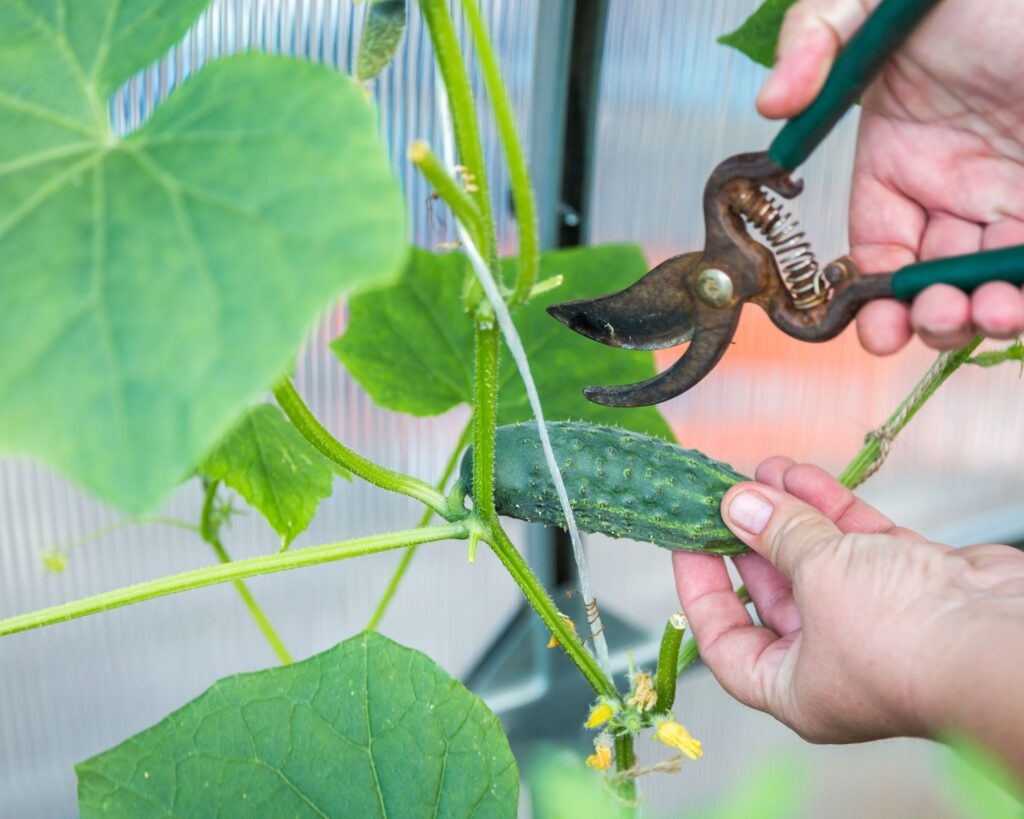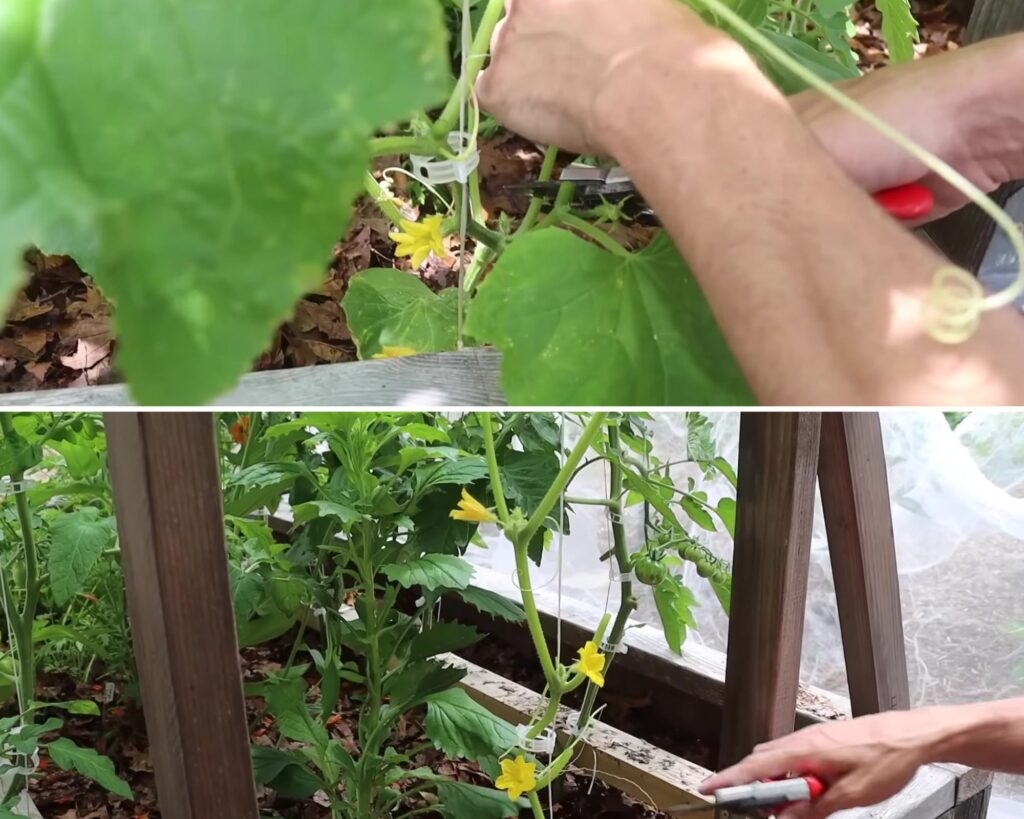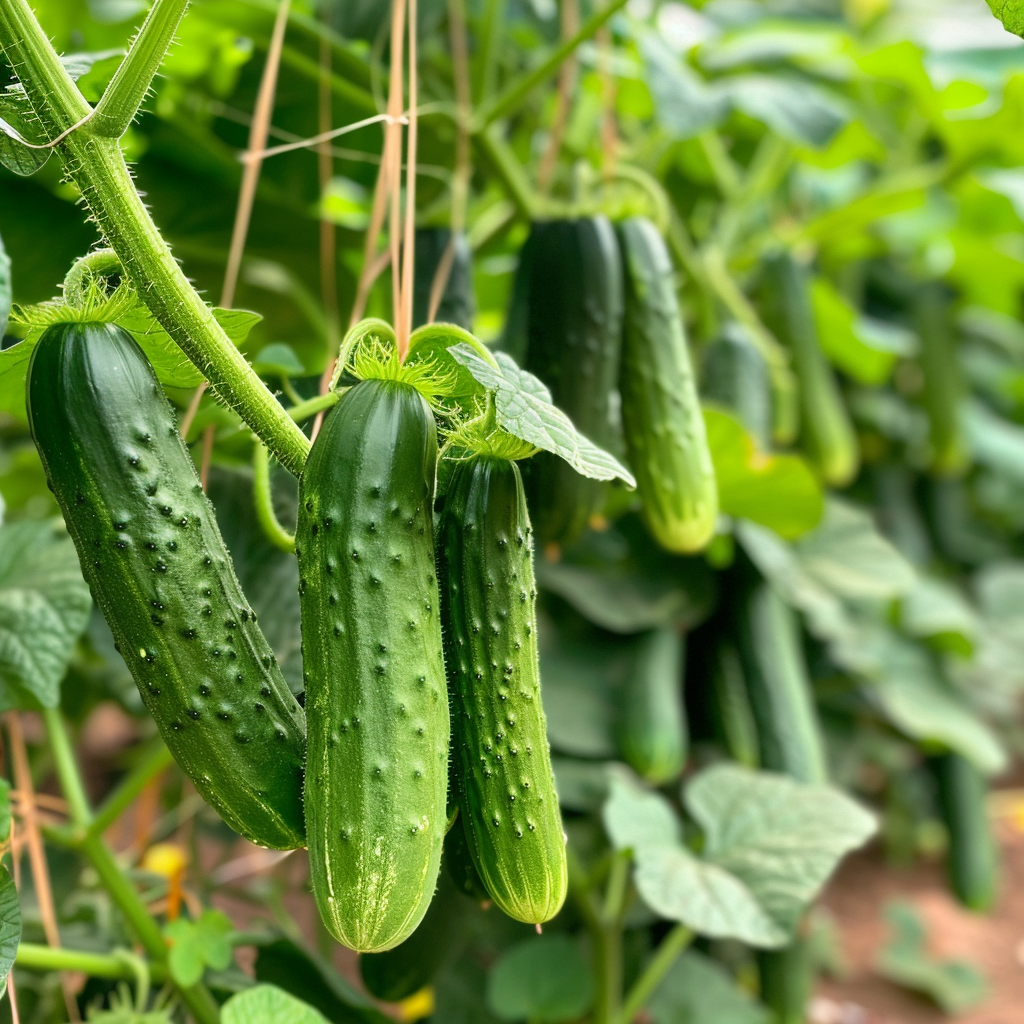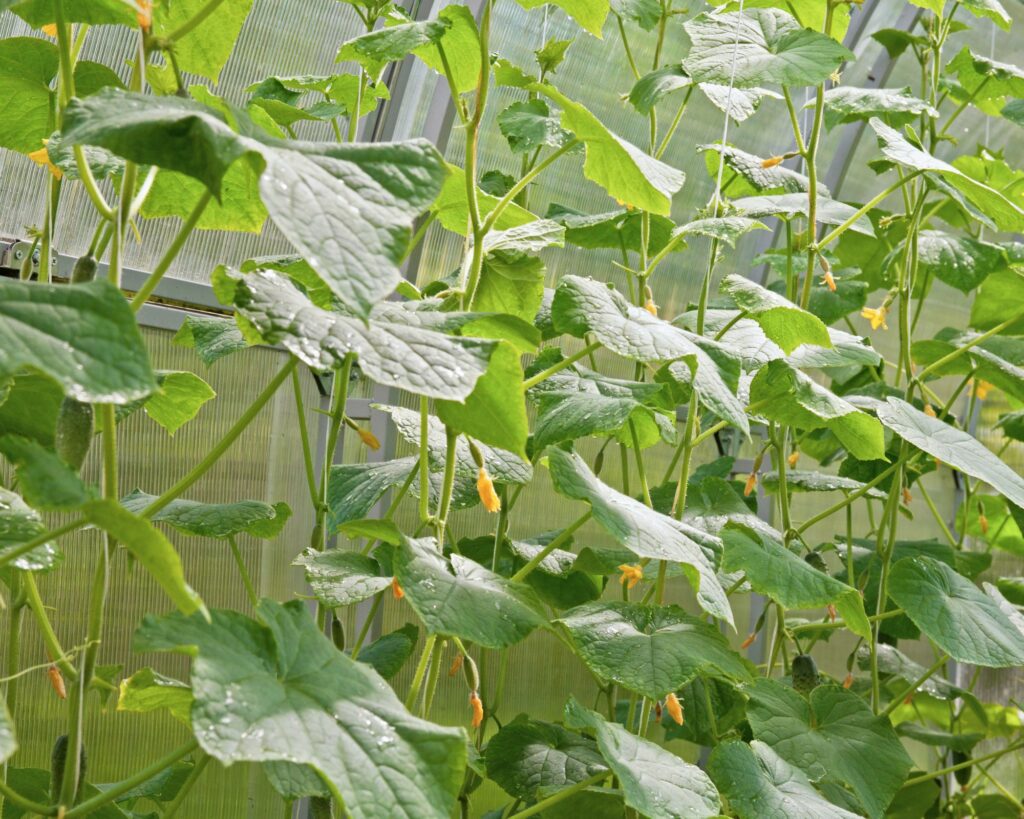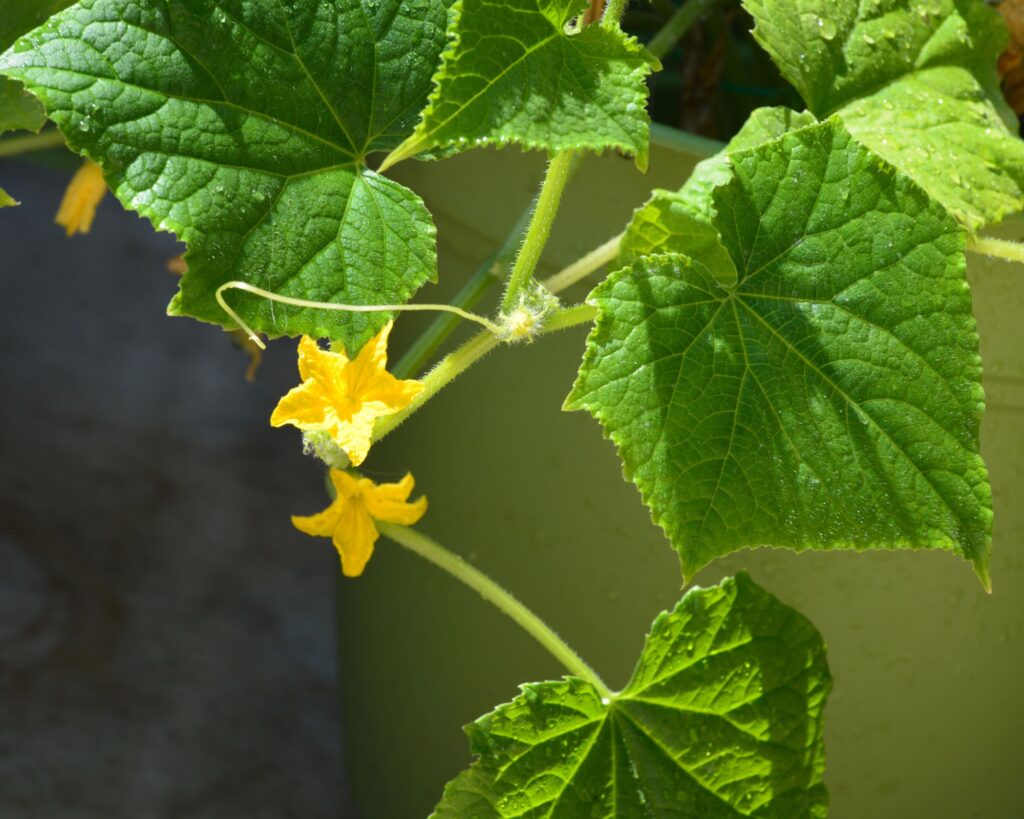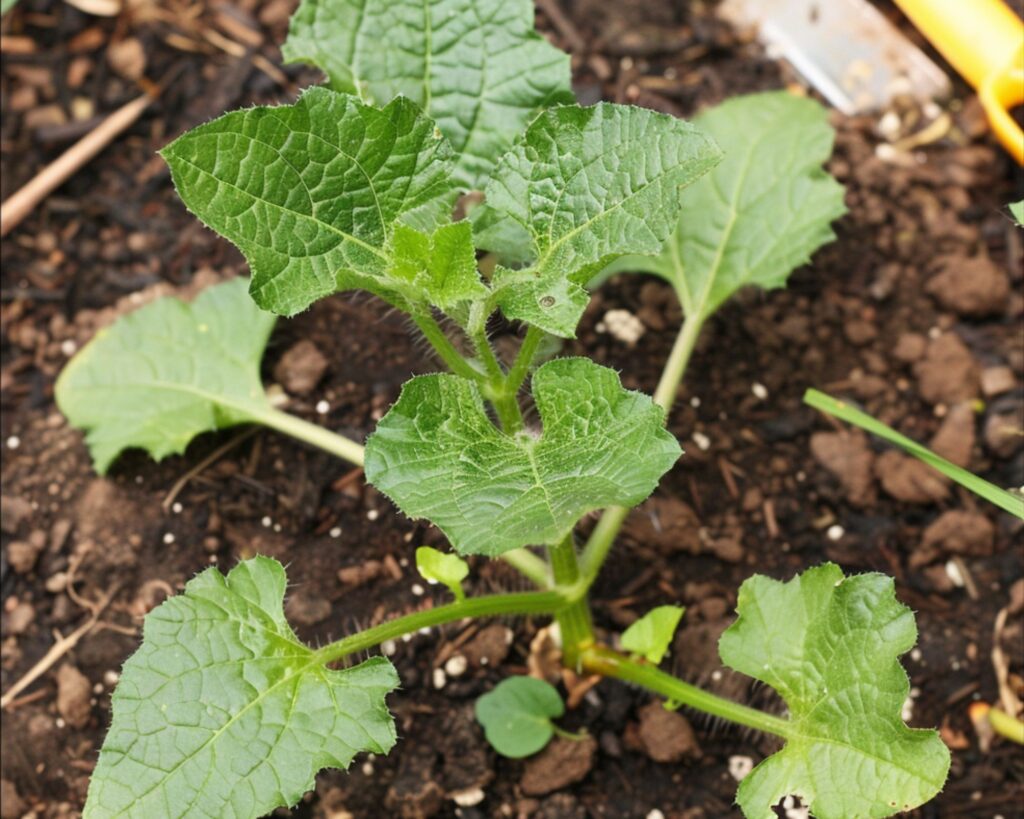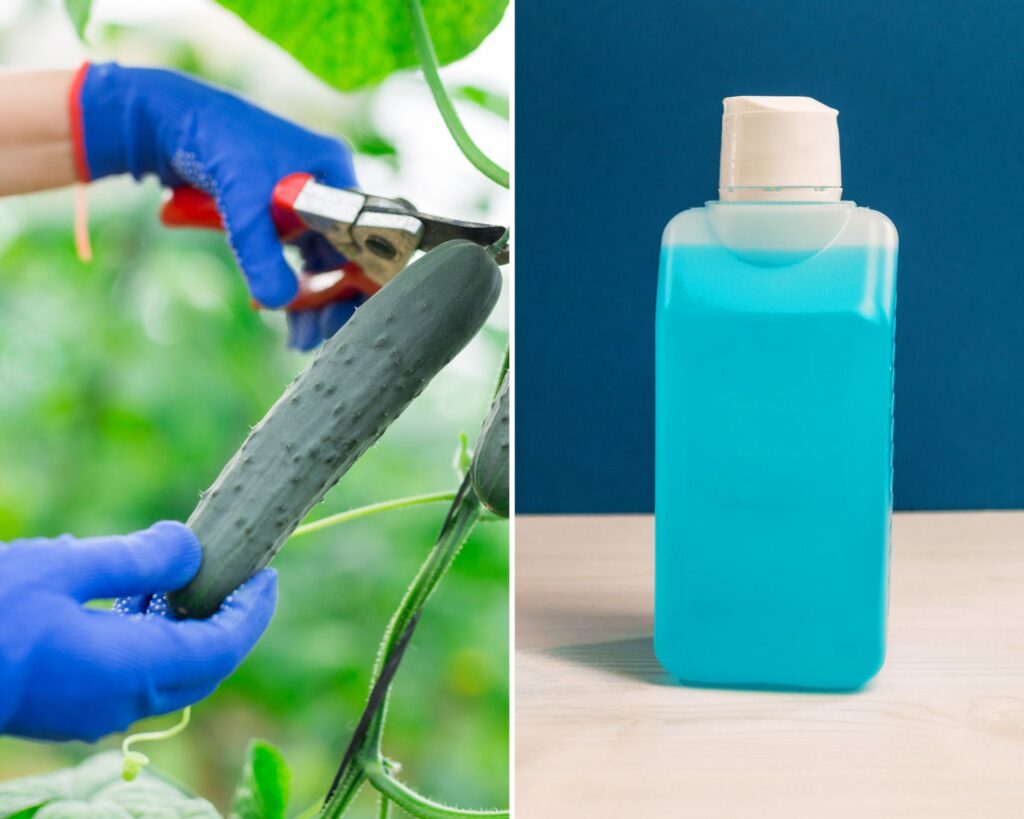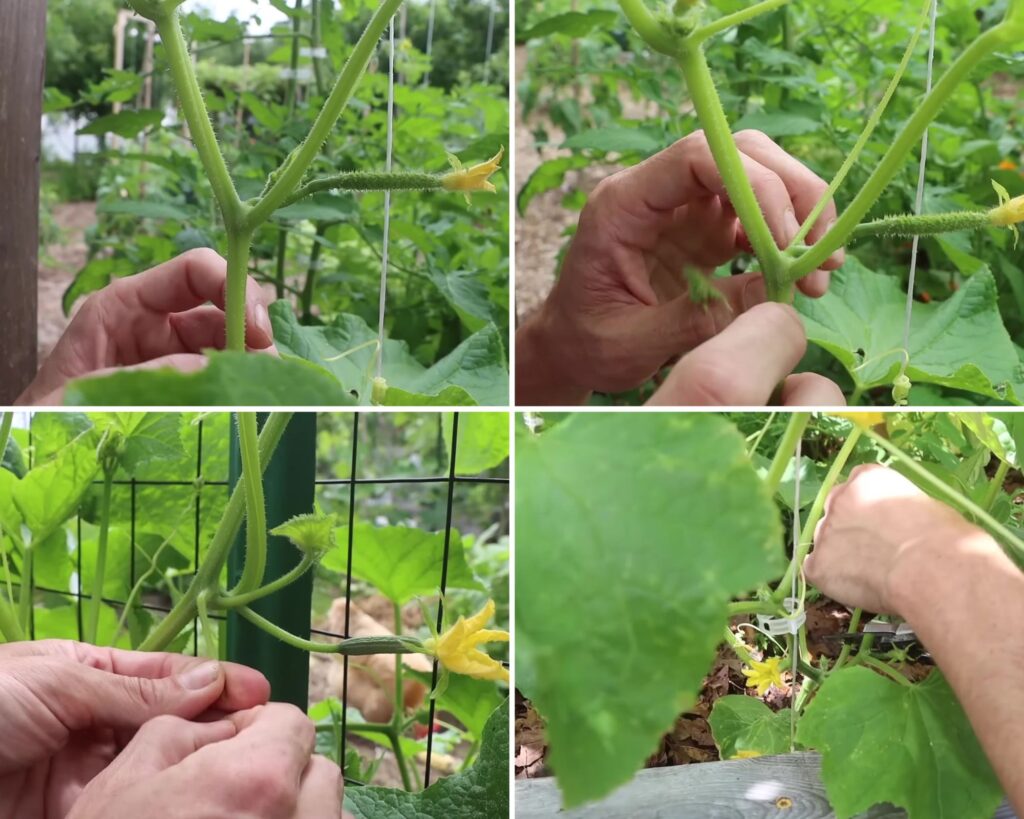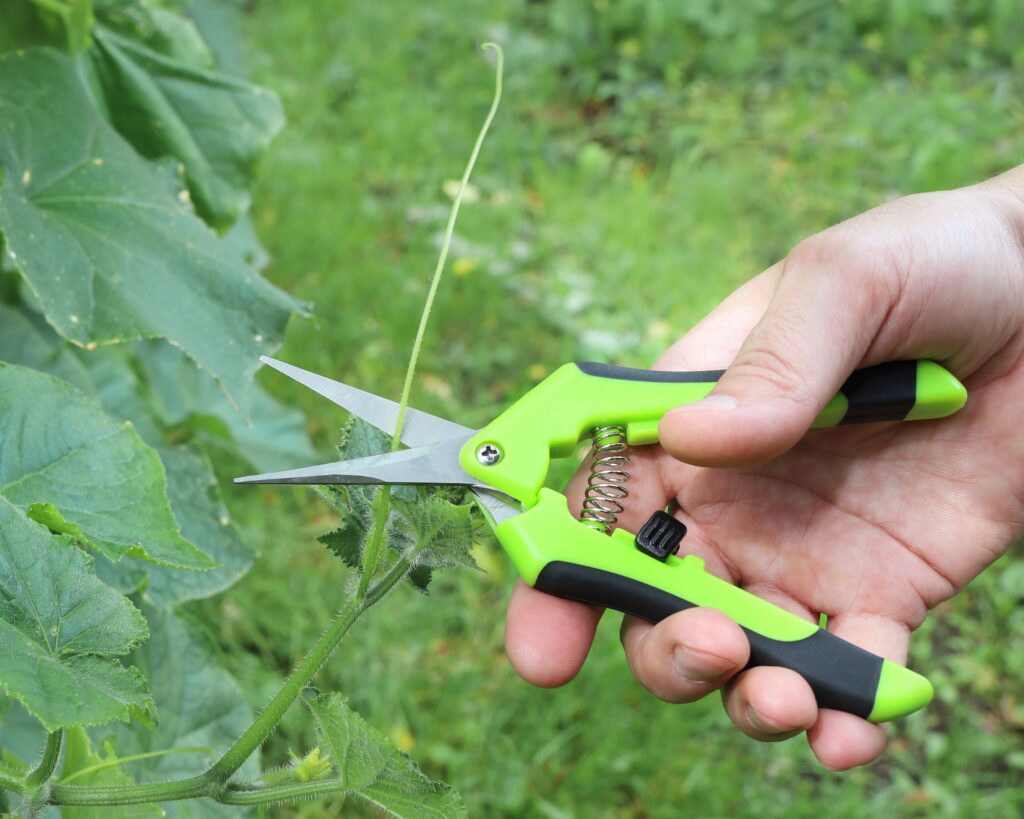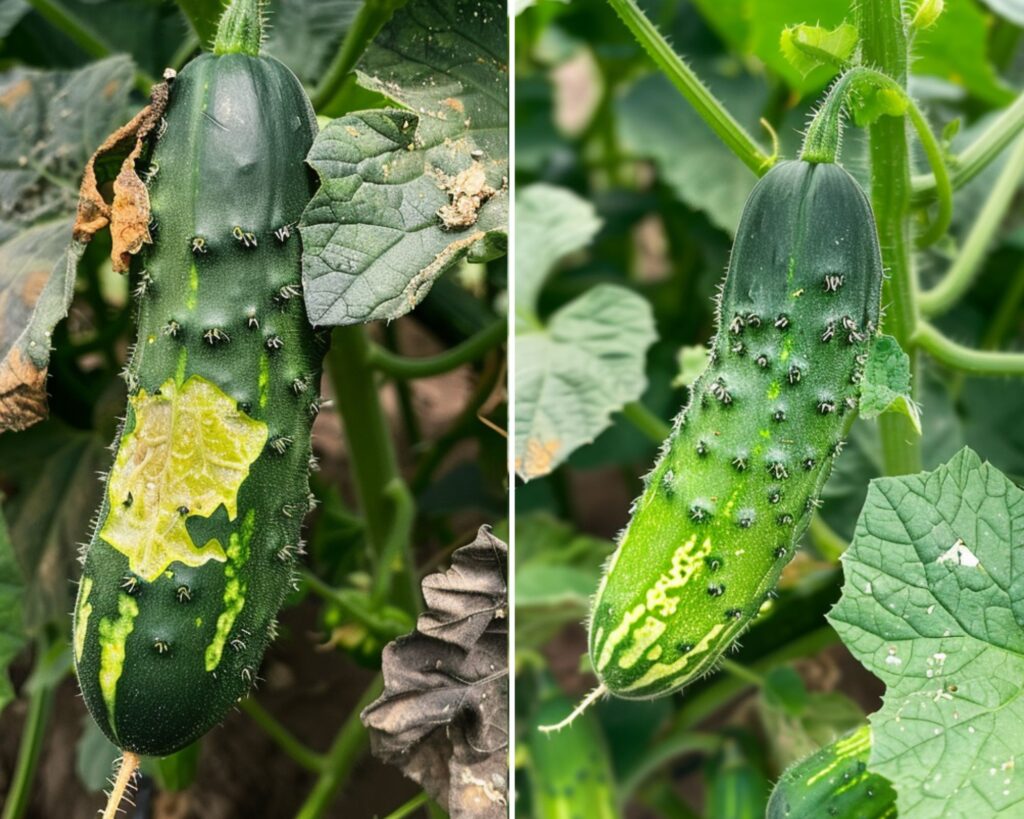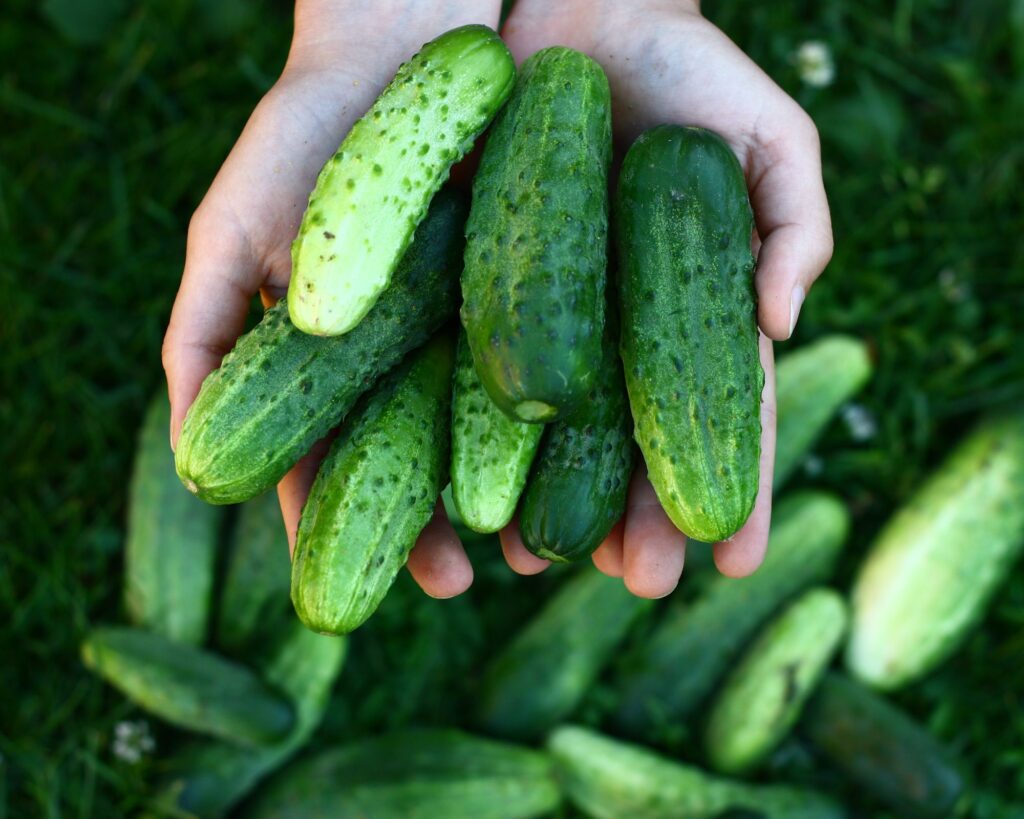Imagine unlocking the secret to a flourishing cucumber garden – pruning. It’s not just about snipping away excess; it’s an art that energizes your cucumber plants, focusing their efforts on fruiting over leafing.
By mastering a few simple cuts, you allow vital sunlight and air to embrace the core of your plants, dramatically decreasing disease risk and boosting health.
Whether your cucumbers climb or sprawl, strategic pruning controls growth, simplifies harvesting, and enhances both the quantity and quality of your harvest.
Ready to transform your cucumber vines into prodigious producers? Let’s delve into the world of pruning with easy-to-follow steps and expert tips that will elevate your gardening game from novice to green-thumb guru.
The Benefits of Pruning Cucumbers
Pruning cucumbers provides several advantages that can lead to healthier plants and better harvests. These benefits include improved fruit quality, enhanced plant health, and increased yield.
Improves Fruit Quality
When you prune your cucumber plants, you help direct the plant’s energy toward producing high-quality fruits.
By removing unnecessary foliage and side shoots, the plant can focus its resources on fruit development. This often results in cucumbers that are more uniform in size and shape.
Pruning also reduces the risk of fungal infections and diseases that can affect the fruit. Better air circulation and sunlight exposure ensure that the cucumbers develop to their full potential.
Enhances Plant Health
Pruning can significantly improve the overall health of your cucumber plants.
Removing excess leaves and stems allows better air flow, which helps prevent the build-up of moisture that can lead to diseases like powdery mildew and downy mildew.
Enhanced sunlight penetration helps the plant undergo efficient photosynthesis.
This also means that the plant’s nutrients are better utilized, making the cucumber plant sturdier and more resilient to pests and adverse weather conditions.
Increases Yield
One of the most rewarding aspects of pruning cucumbers is the potential for increased yield.
By removing non-essential parts of the plant, you ensure that the plant’s energy is channelled into producing more fruit.
Pruned plants often produce a higher number of cucumbers because the plant isn’t wasting resources on unnecessary foliage.
This practice can lead to a more abundant and consistent harvest throughout the growing season, making your gardening efforts all the more fruitful.
Understanding the Cucumber Plant Structure
Cucumber plants have a unique structure, with main vines and several critical leaf nodes. Grasping these characteristics helps you effectively prune them.
Main Vine Characteristics
The cucumber plant’s main vine is the central stem from which side shoots, flowers, and fruit emerge. This vine can grow quite long, sometimes reaching up to 10 feet or more if not pruned. It’s typically green and has a slightly rough texture.
Along the vine, you will find tendrils and internodes, which are spaces between the nodes where leaves and side shoots grow. The main vine is essential for the plant’s stability and nutrient transport.
Importance of Leaves and Nodes
Leaves are vital for photosynthesis, the process by which plants convert sunlight into energy. Each node on the main vine can produce a leaf, a flower, or a tendril.
Nodes are also where side shoots, or lateral vines, form, which can add to the plant’s fruit production.
Properly managing the leaves and nodes through pruning ensures that the plant focuses its energy on fruit growth rather than excessive foliage.
When to Start Pruning
Understanding the right time to prune cucumber plants helps maximize their growth and productivity. Key factors to consider include plant size and the best seasonal timings for pruning.
Ideal Plant Size
Start pruning your cucumber plants when they have grown at least 1-2 feet tall. At this stage, the plants have established a sturdy stem and healthy leaves.
Check for the presence of at least 4-6 mature leaves before you begin. This ensures the plant has enough energy reserves to recover from pruning.
Remove any yellow or damaged leaves early on. This helps the plant focus its energy on healthy growth.
Start with the lower leaves and work your way up. This allows for better air circulation and reduces the risk of disease.
Seasonal Timing
Prune your cucumber plants during the late morning or early afternoon when the weather is dry. This reduces the risk of fungal infections.
Start pruning early in the growing season, usually 2-3 weeks after planting. Early pruning encourages strong growth and better fruit production.
Continue pruning regularly throughout the growing season. Regular maintenance pruning keeps the plants healthy and productive.
Avoid pruning during extreme weather conditions. Stressful weather can make it harder for plants to recover from pruning.
By considering plant size and seasonal timing, you can effectively manage your cucumber plants for optimal health and yield.
How to Prune Cucumbers
Pruning cucumbers is an essential part of growing healthy and productive plants. You’ll need a few basic tools and to follow simple steps for effective pruning.
Tools You’ll Need
To prune cucumbers, gather the following tools:
Sharp scissors or pruning shears: Ensure they are clean to prevent disease spread.
Garden gloves: Protect your hands from dirt and scratches.
Disinfectant: Sterilize your tools before and after use to maintain plant health.
Having the right tools makes pruning easier and more effective. Sterile, sharp tools reduce the risk of damaging the plants or spreading disease, keeping your cucumbers growing strong.
Step-by-Step Guide
1. Identify the main stem: Look for the strongest, central stem of your cucumber plant. This will be your primary focus.
2. Remove suckers: Find the small shoots that develop in the leaf axils (where leaves join the stem). Pinch these off with your fingers or use your pruning shears.
3. Trim the lateral vines: Allow one or two lateral vines to grow, but cut back the rest to promote energy in fruit production.
4. Remove yellowing leaves: These are often signs of disease or aging. Cut them off to improve air circulation and light penetration.
5. Disinfect tools after use: Dip your scissors or shears in disinfectant after pruning to prevent the spread of any potential disease.
Prune your cucumber plants in the morning or evening when the weather is cool, avoiding the heat of midday to reduce stress on the plants. Regular pruning will help your cucumbers thrive and produce more fruit.
Common Mistakes to Avoid
Pruning cucumbers is essential for healthy growth, but certain mistakes can hinder your efforts. Avoid over-pruning, ensure proper technique, and pay close attention to plant signals for optimal results.
Over-Pruning
Removing too many leaves and stems can stress the plant and affect its growth. Cucumbers use their leaves for photosynthesis, and excessive removal can stunt growth.
Prune only the necessary parts, such as damaged or diseased leaves, to maintain balance.
A good rule of thumb is to prune a few leaves at a time, ensuring you don’t exceed 20-30% of the plant’s foliage. This approach helps maintain the plant’s energy and productivity while allowing for better airflow and light penetration.
Improper Technique
Using the correct tools and methods is crucial. Dull or dirty tools can damage the plant and spread disease, leading to poor plant health.
Always use sharp, clean pruners or scissors to make clean cuts. Cutting too close to the main stem can cause wounds that invite disease. Leave a small stub to allow for natural healing.
Practicing proper technique reduces stress on the plant and encourages healthier growth, resulting in more robust and fruitful cucumber vines.
Neglecting Plant Signs
Cucumber plants communicate their needs through various signs. Ignoring these signals can lead to problems. Look for signs such as yellowing leaves, which may indicate nutrient deficiencies or stress.
Healthy plants have vibrant, green leaves and steady growth. Be attentive to changes in your plant’s appearance and health.
Adjust your pruning practices based on the plant’s condition. For instance, if a plant looks stressed, hold off on pruning until it recovers. Observing and responding to plant signs helps ensure your cucumbers thrive.
Pruning cucumbers is an essential gardening practice that can significantly enhance the health and productivity of your plants. By focusing the plant’s energy on fruit production rather than unnecessary foliage, you can enjoy higher yields of high-quality cucumbers.
With the right tools and techniques, pruning becomes a straightforward task that can be incorporated into your regular gardening routine.
With practice and patience, you’ll become adept at maintaining your cucumber plants, reaping the rewards of your efforts throughout the growing season.
